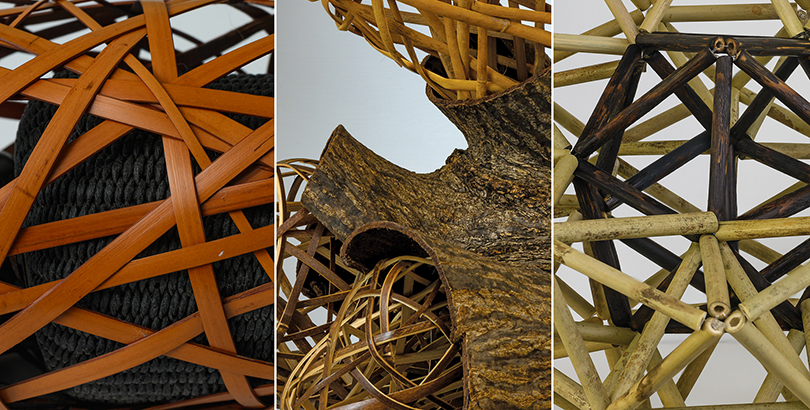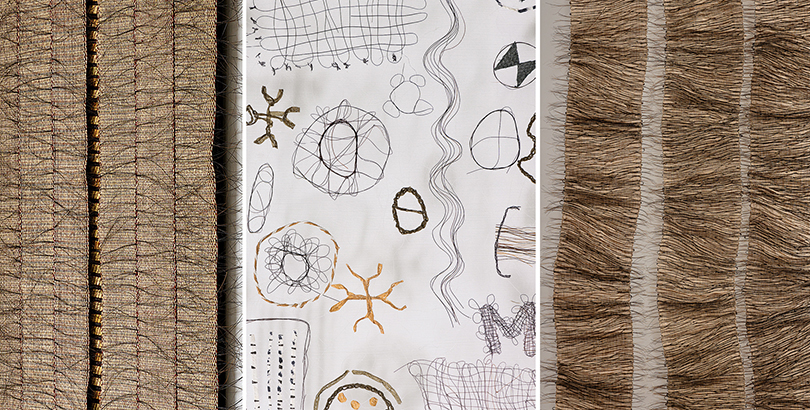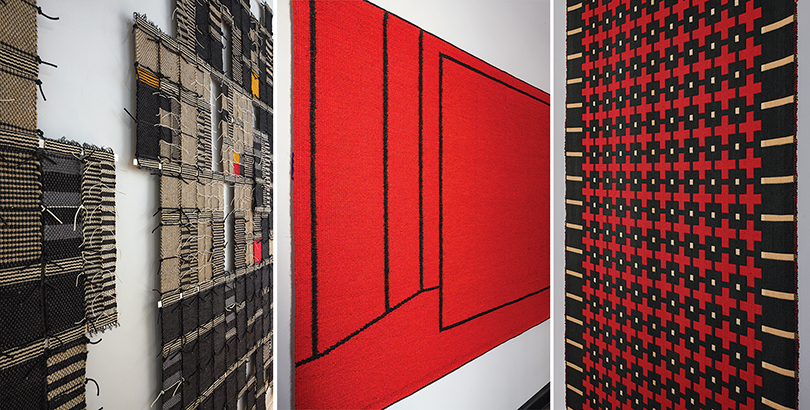Fiber is having a moment — exhibitions of art textiles and fiber art are installed all over the world. Having promoted this medium for more than 30 years, browngrotta arts couldn’t be more pleased. We represent the work of an extraordinary group of artists — from fiber art’s origins in the 50s and 60s, to those whose careers started many years later. Our Spring Art in the Barn exhibition, Discourse: art across generations and continents, is designed to celebrate this multiplicity of makers and methods. Open at browngrotta arts in Wilton, Connecticut, from Saturday, May 4th through Sunday, May 12, 2024, Discourse will assemble a large and eclectic group of artworks that celebrate artists from different countries, who work with varied materials, and represent distinct artistic approaches. More than 50 artists from 18 countries will be featured. Included will be current works from 60 years ago, current mixed media works and sculpture, and pieces created in the decades between — enabling an intriguing look at intergenerational differences, material breakthroughs, and historical significance in fiber art.
The comparisons and contrasts on view in Discourse involve differing approaches to structure, materials, abstraction, messaging, techniques and more. Viewers are encouraged to develop and refine their own perspectives of contemporary fiber’s evolution and energy.

Exploring Bamboo, Baskets by Nancy Moore Bess, Hisako Sekimachi, Noriko Tanikawa. photos by Tom Grotta
The artists in Discourse each possess “material intelligence,” what author and curator Glenn Adamson describes as “a deep understanding of the material world around us, an ability to read that material environment, and the know-how required to give it new form.” They take a disparate approach to materials such as bamboo, rendered differently by Hisako Sekijima (JP), Nancy Moore Bess (US), and Noriko Tanikawa (JP)

Three artists, Marianne Kemp (NL), Adela Akers (US) and Marian Bijlenga (NL) work with horsehair, each with differing results.

Paper is perhaps the most mutable material in the exhibition. Paper cord, book pages, and rice paper used by Shoko Fukuda (JP), Mary Merkel-Hess (US), Naomi Kobayashi (JP), Pat Campbell (US), Eva Vargö (SE), Neda Al-Hilali (US), Jane Balsgaard (DE), and Wendy Wahl (US) are among the material variations found in Discourse.

Engaging structures are also featured in Discourse. Intricate sculptures of willow twigs by John McQueen, ethereal objects of jute by Naoko Serino, sinuous crocheted works by Norma Minkowitz (US), and Norie Hatekayama’s inexplicable forms of plaited paper tape illustrate the multiple ways in which artists continue to innovate in this medium.

Much has been made this year about the contributions of weaving and related techniques to abstraction, modernism’s preeminent art form. Witness Woven Histories: Textiles and Modern Abstraction at the National Gallery in Washington, D.C. and Weaving Abstraction in Ancient and Modern Art at the Metropolitan Museum of Art, New York, New York, which aims to offer new insights into the emergence of abstract imagery. Specifically, the Met’s exhibition sets out to illustrate how the constructive nature of weavings, arising from the grid formed by the vertical and horizontal elements of the loom, prompted the formal investigation of geometric designs. There are several examples in Discourse, works by Warren Seelig from the 70s and 80s, and works from Blair Tate (US) and Gudrun Pagter (DK) created 50 years later.

The evolution of contemporary fiber art can be seen in works from Eastern Europe and those from Western Europe and the US. One of the oldest works in the exhibition is a heavily textured wool-and-linen weaving, Słońce Szafirowe, (Sapphire Sun), by Polish weaver Zofia Butrymowicz from 1968 which was featured in Beyond Weaving: the art fabric, by Jack Lenor Larsen and Mildred Constantine which provides an interesting contrast to Jacquard tapestries of wool and cotton by Americans Lia Cook and Michael Radyk.

Some of the artists in Discourse, including Laura Foster Nicholson (US) Gyöngy Laky (US), James Bassler (US), and Irina Kolesnikova (RU/DE), use the medium of fiber art to make explicit statements about the modern world — about personal anxieties, human interaction and our impact on the environment. Gyöngy Laky’s (US) work, Anticipation, which spells out the word “Who?“ in applewood branches, presents a question. “Given the challenges, concerns, conflicts and other dangers we face today,” Laky says, “this question, underlies the search for a way forward to a better day.” Laura Foster Nicholson’s (US) woven landscapes, idyllic at first glance reveal a concern with the natural world. “In recent years,” the artist says, “my work has moved toward recording the various ways humankind has interfered in the environment.” Through Spectator, Irina Kolesnikova (RU/DE) shares the anxiety of daily life. She presents a man, her alter ego, in a variety of discomfiting scenarios. In This Old House, Jim Bassler references the book Caste, which describes America as an old house, with the caste system wrought by slavery as central to its operation as are studs and joints. Bassler’s flag is patterned with wax resist and a multitude of woven elements “that could represent the textile talents of the Africans who arrived in Virginia in 1619 and who were forced into slavery thus giving up their identity and culture.”
In sum, Discourse offers no end of ideas and innovations. We invite you to draw comparisons and gain new perspectives of your own. See you in May!
Exhibition Details:
Discourse: art across generations and continents
May 4 – May 12, 2024
browngrotta arts
276 Ridgefield Road, Wilton, CT 06897
Gallery Dates/Hours:
Saturday, May 4th: 11am to 6pm [Opening & Artist Reception]
Sunday, May 5th: 11am to 6pm (40 visitors/ hour)
Monday, May 6th through Saturday, May 11th: 10am to 5pm (40 visitors/ hour)
Sunday, May 12th: 11am to 6pm [Final Day] (40 visitors/ hour)
Schedule your visit at POSH.
Safety protocols:
POSH reservations strongly encouraged • No narrow heels please
Catalog:
A full-color catalog, browngrotta arts’ 59th, Discourse: art across generations and continents, with an essay by Erika Diamond, Artist | Curator | Associate Director of CVA Galleries | Chautauqua Institution, will be published by the browngrotta arts in May 2024 in conjunction with the exhibition.
